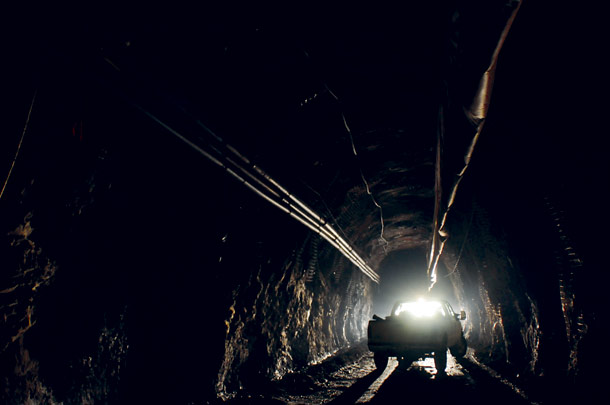A proposed copper and silver mine in Northwest Montana has been dealt yet another blow.
Last week, Lewis and Clark County District Court Judge Kathy Seeley of Helena invalidated the state water pollution permit for the proposed Montanore Mine south of Libby. Environmental groups praised the rulings as a win for clean water and native fish, but supporters of the mine project, currently owned by Idaho-based Hecla Mining Company, said the ruling makes no sense.
The permits issued by the Montana Department of Environmental Quality would have allowed Hecla to discharge water into streams in the Cabinet Mountain Wilderness. Environmental groups worried that would permanently damage the water for bull trout.
“Hecla’s proposal to mine under the Cabinet Mountains has always been a bad idea for Montana. This ruling protects clean water on public lands that belong to all of us,” said Earthjustice attorney Katherine O’Brien. “The decision from the court also sends a strong message that our state environmental agency cannot cut corners when it comes to permitting industrial pollution in our streams.”
The environmental group’s primary argument was that the permit was approved on the basis of outdated information from the early 1990s. Officials with Hecla said that is untrue and note that the permit was revised multiple times.
“This permit was originally issued in 1997, renewed in 2006 and again in 2015, and receiving waters remained protected,” said Hecla spokesperson Luke Russell. “The 2015 renewal included the most stringent limits yet, and so the court action essentially sent back to DEQ the permit with the most protections to the receiving waters.”
“We thought — and continue to believe — that DEQ got it right,” Russell added.
Russell said Hecla is evaluating the ruling and will decide its next steps after that analysis.
The court’s ruling was in response to a lawsuit filed by Earthjustice on behalf of the Montana Environmental Information Center, Save Our Cabinets and Earthworks. The court concluded that the DEQ had violated multiple sections of the federal Clean Water Act and Montana Water Quality Act.
“This is a big win for clean water,” said Bonnie Gestring, Northwest Program Director for Earthworks. “The court affirmed that Montanore cannot make use of a 27-year-old permit that would allow unnecessary pollution of Libby Creek, rather than complying with today’s laws to better protect Montana’s trout streams.”
The ruling was the latest in a series of setbacks delivered by Montana’s courts to the company trying to develop Montanore and another copper and silver mine, the Rock Creek project, near Noxon. Hecla acquired both projects in 2015.
In April, Seeley struck down another water permit from the Montana Department of Natural Resources and Conservation for the Rock Creek project. The ruling came as a result of a lawsuit from the same coalition of environmental groups.
For years, proponents of the mines said it was a lack of federal approvals that stood in the way of the mines being fully explored and then, if the economics made sense, developed. But now, it appears a lack of state permits could be the major obstacle.
Jim Jensen, executive director of the Montana Environmental Information Center, said it’s “time for this project to just go away.”
Mining companies have long eyed the earth below the Cabinet Mountains as a prime source of copper and silver. Since the 1980s, numerous companies have tried to bring two different mines, one near Noxon and the other near Libby, to production but have been delayed by legal, environmental and economic forces. Proponents of the projects have said opening either of the Rock Creek or Montanore mines would be a boon for one of the most economically depressed areas of Montana.
Taken together, both Montanore and Rock Creek have the potential to produce more than 500 million ounces of silver and 4 billion pounds of copper in their lifetimes. The two deposits are separated by about 7,000 feet of earth and a fault line, suggesting that at one time it was actually one ore body. Many consider the combined deposit beneath the Cabinet Mountains to be one of the largest untapped copper and silver resources on the planet.
